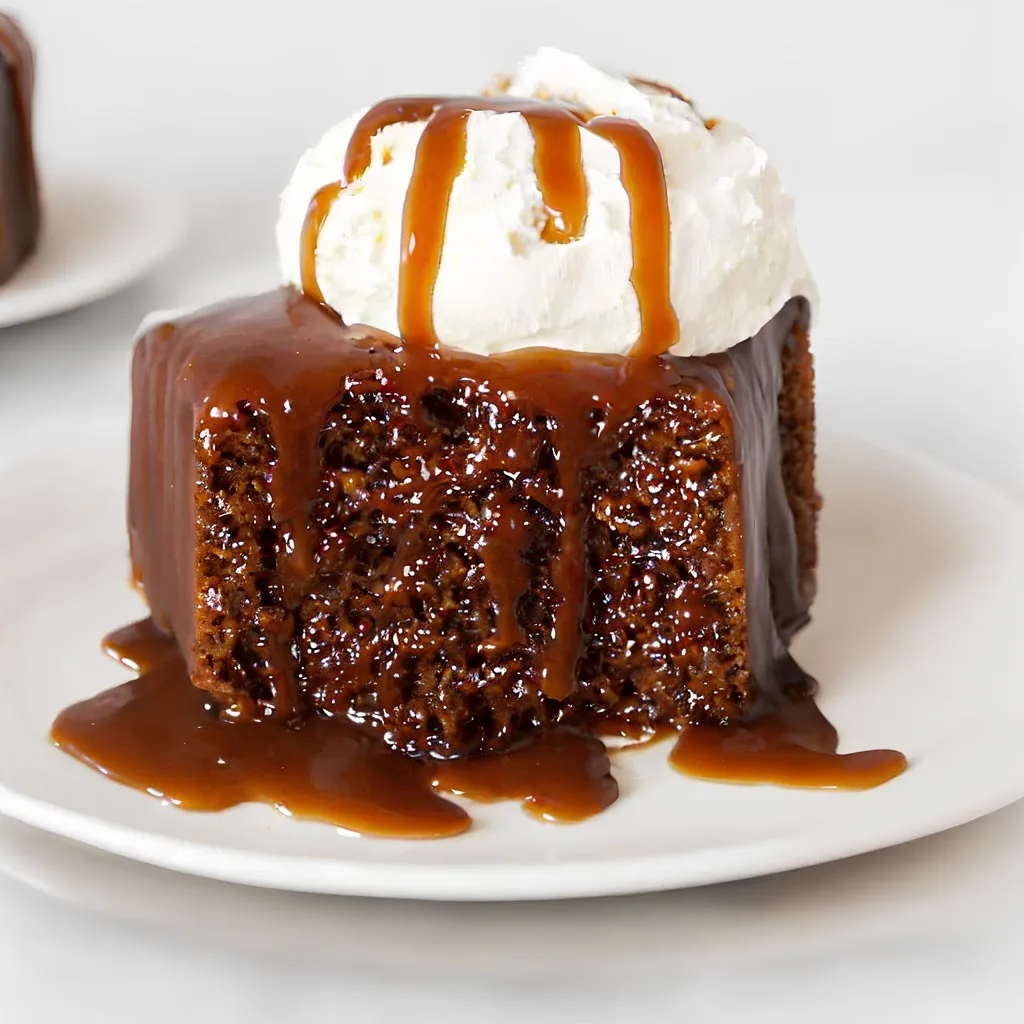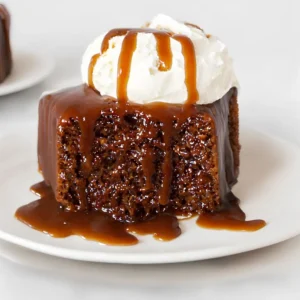
Welcome to the delightful world of sticky toffee pudding! Originating from Britain, this comforting dessert has captured the hearts and taste buds of many around the globe.
Don’t let its fancy name intimidate you; making sticky toffee pudding is simpler than you might think. It’s a classic treat that marries rich, moist cake with a decadent toffee sauce, resulting in a heavenly combination of flavors and textures.
Despite its indulgent taste, this recipe falls into the category of beginner-friendly desserts. With just a handful of ingredients and straightforward instructions, you’ll soon be enjoying your own homemade sticky toffee pudding.
Whether you’re craving a cozy dessert for a chilly evening or planning a special dinner party, this recipe is sure to impress your guests and leave them craving more.
Expert Tip: If you prefer a smoother texture in your toffee sauce, you can strain it through a fine-mesh sieve before serving to remove any lumps or bits of caramelized sugar.
Dates: Finely chopped dates add natural sweetness and a moist texture to the pudding, infusing it with caramel-like flavor notes.
Self Raising Flour: This flour provides the necessary lift and structure to the pudding, ensuring a light and fluffy texture.
Brown Sugar (Light): Brown sugar contributes to the rich, caramel flavor of both the pudding and the toffee sauce, enhancing their sweetness and depth.
Eggs: Eggs bind the ingredients together and add richness to the pudding, resulting in a tender crumb.
Butter (Unsalted, softened): Butter lends richness and moisture to the pudding, while also contributing to the flavor and texture of the toffee sauce.
Vanilla Extract: Vanilla extract enhances the overall flavor profile of the pudding, imparting a warm and aromatic essence.
Baking Soda: Baking soda helps the pudding rise during baking, ensuring a light and airy texture.
Brown Sugar (Light): Light brown sugar forms the base of the toffee sauce, providing sweetness and a rich caramel flavor.
Double Cream: Double cream adds luxurious richness and a smooth, velvety texture to the toffee sauce, creating a decadent topping for the pudding.
Expert Tip: For a variation on the classic recipe, try incorporating chopped nuts such as pecans or walnuts into the pudding batter for added texture and flavor.
Expert Tip: To intensify the flavor of the toffee sauce, consider adding a splash of dark rum or whiskey during the cooking process.
Leftover pudding can be stored in an airtight container in the refrigerator for up to three days. Reheat individual portions in the microwave or oven before serving.
Yes, you can freeze sticky toffee pudding. Wrap individual portions tightly in plastic wrap and aluminum foil before placing them in a freezer-safe container. Thaw in the refrigerator overnight before reheating.
Yes, you can prepare the pudding in advance and reheat it before serving. Store the baked pudding and toffee sauce separately in the refrigerator, then warm them up separately before assembling and serving.
While it’s best to stick to the recipe for optimal results, you can experiment with substitutes such as different types of sugar or alternative flours. However, keep in mind that these substitutions may affect the texture and flavor of the final dish.
To ensure a moist pudding, be careful not to overbake it. Check for doneness using a toothpick; if it comes out clean or with a few moist crumbs, the pudding is ready. Additionally, soaking the warm pudding with the toffee sauce helps to lock in moisture.
Here are some more recipes for you to enjoy! If you my recipes don’t forget to rate and leave a comment.
If you have any recipe suggestions, please do not hesitate to ask me. A great way to stay in contact with me is through Instagram, Facebook, Twitter and YouTube. Don’t forget to tag me @CookwithNabeela in your recipe photos!

Subscribe now to receive my latest recipes directly in your inbox. Stay up-to-date and never miss out!

I love to cook! I want to share with you my favourite, delicious family-friendly recipes. I want to inspire you to create fantastic food for your family every day.
Add your first comment to this post